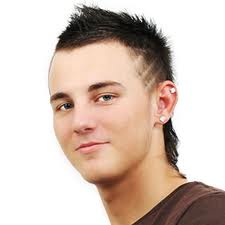The scent of singed hair and the buzz of blow-dryers were conspicuously absent backstage at fall shows. The pros agree the hair of the moment is anything but high-maintenance.
However much we torture and twist our hair to try to achieve the latest runway looks, in the end, what we all want is shine, movement, volume... basically, perfection. But few of us have attained this nirvana, says international hair stylist Ouidad who has been dubbed the Queen of Curl by the beauty world. "Once we get past the age of ten, most
of us embark on this endless cycle of heat-styling, coloring, and so forth," she says. "It robs the hair of its natural beauty." Fortunately, the style to have this season is actually good for our hair: "The trend has moved away from aggressively straightened and tousled hair to more feminine and wearable styles that put a greater emphasis on hair health and natural beauty," says Manhattan-based stylist Antonio Prieto. But, as always, the "natural look" does require some work. Here, the care and feeding of beautiful hair.
ACCEPT THE TRUTH
When it comes to which hairstyles suit whom, the sweeping generalities abound: Long hair is best on taller women, pixie cuts complement those with delicate features, shorter women need shorter hair. But stylists from the modern school say that achieving fabulous hair is actually more about playing up your hair’s natural texture than following a set of arbitrary rules. "The idea is to emphasize the real state of your hair,’’ says celebrity hair guru John Sahag. "Don’t try to force it to be something that it’s not." And, of course, as frizz fighter and salon owner, John Frieda notes, "beautiful hair does not exist on its own. It suits a woman’s personality, style of dress, bone structure, and the occasion."
SUBMIT TO THE SCISSORS
According to Ouidad, "a good cut requires minimal product and styling, and is as becoming to you as it is practical." To that end, stylists can’t say enough about layers, which provide volume and emphasize texture. Long, piecey layers, like the ones that John Sahag created on Spanish beauty Eugenia Silva (left) for medium to long hair, and graduated ones for shorter styles. Another way to fake healthy hair is to forgo hard edges and straight lines, and go for razored ends and a subtle unevenness. The effect, according to John Frieda’s international creative director, Rick Haylor, is "like you’ve had a beautiful cut that’s been growing out for a few weeks. Think of it as no-makeup makeup for hair."
FEED YOUR HEAD
Your average model might have a fat bank account, but if she’s juice-fasting for her next Sports Illustrated cover, she also might also have thinning hair. "I see so many women who have hair problems because they are always dieting," says Manhattan nutritionist Heather Greenbaum. "You can tell what someone eats by the state of her hair." Greenbaum recommends building volume from the inside out with a diet high in protein, essential for new hair growth, and omega-3 fatty acids, which work as internal deep-conditioners for dry, brittle hair. Cold-water fish like tuna and salmon, high in both protein and omega-3, is the ultimate food for fuller hair.
COME CLEAN
In terms of shampooing, every pro has his own opinion about how frequently you should do it. All would agree, however, that over-washing is a cardinal sin. But new mild formulations allow clean freaks to get their daily fix without stripping. "Shampoos that don't lather up a lot contain fewer surfactants, which can be harsh on hair," Ouidad says. "You have to put moisture back into the hair," notes bicoastal stylist Philip B. "Most hair problems, such as fly-away and split ends, are caused by dryness." Conditioning after every shampoo has become second nature to most of us, but to get even more out of the ritual, Ouidad recommends leaving about 25 percent of the product in your hair after you're done rinsing. Most stylists also suggest deep-conditioning treatments at least monthly.







